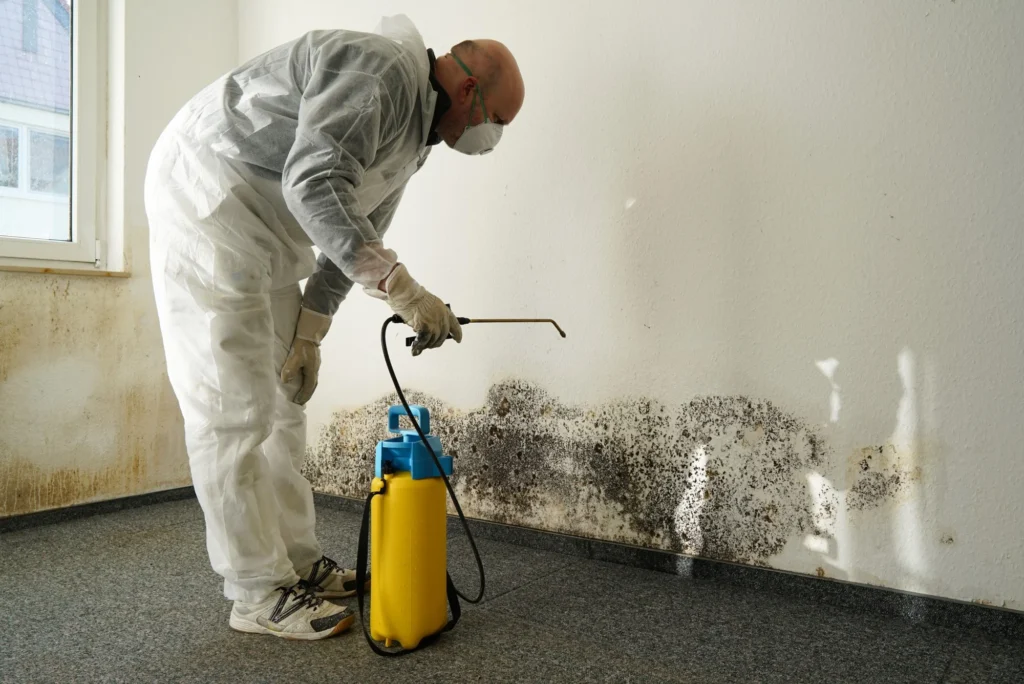Mold is an unwelcome guest in many basements. It thrives in dark, damp spaces, causing health issues and damaging property. Understanding why mold loves these areas is the first step to stopping it. Basements often have limited sunlight and higher humidity, creating the perfect environment for mold to grow. Poor ventilation can trap moisture, while leaks or seepage add to the problem. Environmental mold control focuses on addressing these conditions to prevent mold from taking hold. By improving air circulation, reducing moisture, and sealing potential entry points, we can create a less inviting atmosphere for mold. Regular inspections play a vital role in keeping mold at bay. Knowing what to look for and how to act quickly can make all the difference. In the following sections, we’ll explore simple yet effective steps to tackle mold in your basement and maintain a healthier home.
Understanding Mold Growth
Mold spores are present in the air around us. When they land on damp surfaces, they begin to grow. Basements are particularly vulnerable due to their environment. Let’s examine why:
- Humidity: High humidity levels encourage mold growth. Basements often have higher humidity because they are below ground level.
- Water Leaks: Leaks from pipes or windows can provide a constant source of moisture.
- Inadequate Ventilation: Without proper airflow, moisture becomes trapped, creating a breeding ground for mold.
Health Risks of Mold
Mold exposure can lead to various health problems. These range from minor irritations to more severe respiratory issues. It’s important to understand these risks:
- Allergic Reactions: Sneezing, skin rashes, and watery eyes are common reactions.
- Asthma: Mold can trigger asthma attacks in those with the condition.
- Respiratory Infections: Prolonged exposure can lead to infections in the lungs.
Steps to Prevent Mold
Taking action to prevent mold is essential. Here are three effective strategies:
- Improve Ventilation: Ensure that your basement has proper airflow. Use fans or install vents to keep the air moving.
- Reduce Humidity: Use a dehumidifier to maintain lower humidity levels. Aim for levels below 60%.
- Seal Cracks and Leaks: Regularly inspect for any cracks or leaks. Sealing them will prevent water from entering.

Comparing Solutions
Choosing the right solution depends on your specific situation. Here’s a simple comparison of common methods:
| Solution | Advantages | Disadvantages |
|---|---|---|
| Dehumidifiers | Effective at reducing humidity | Requires regular maintenance |
| Improved Ventilation | Natural method, energy efficient | May require structural changes |
| Sealing Leaks | Prevents water ingress | Can be labor-intensive |
Regular Inspections
Inspecting your basement regularly is key. Look for signs of mold, such as discoloration or musty odors. Early detection allows for prompt action. The Environmental Protection Agency offers guidelines on identifying and managing mold. Regular checks help prevent small problems from becoming significant issues.
Conclusion
Mold thrives in basements due to conditions like high humidity and poor ventilation. By understanding these factors, we can take effective steps to prevent mold. Improving air circulation, reducing moisture, and sealing potential entry points are essential measures. Regular inspections ensure that any mold is detected and addressed quickly. With these strategies, we can keep basements mold-free and maintain a healthier home. Remember, environmental mold control is an ongoing process. Consistent attention ensures that mold does not find a home in your basement.

